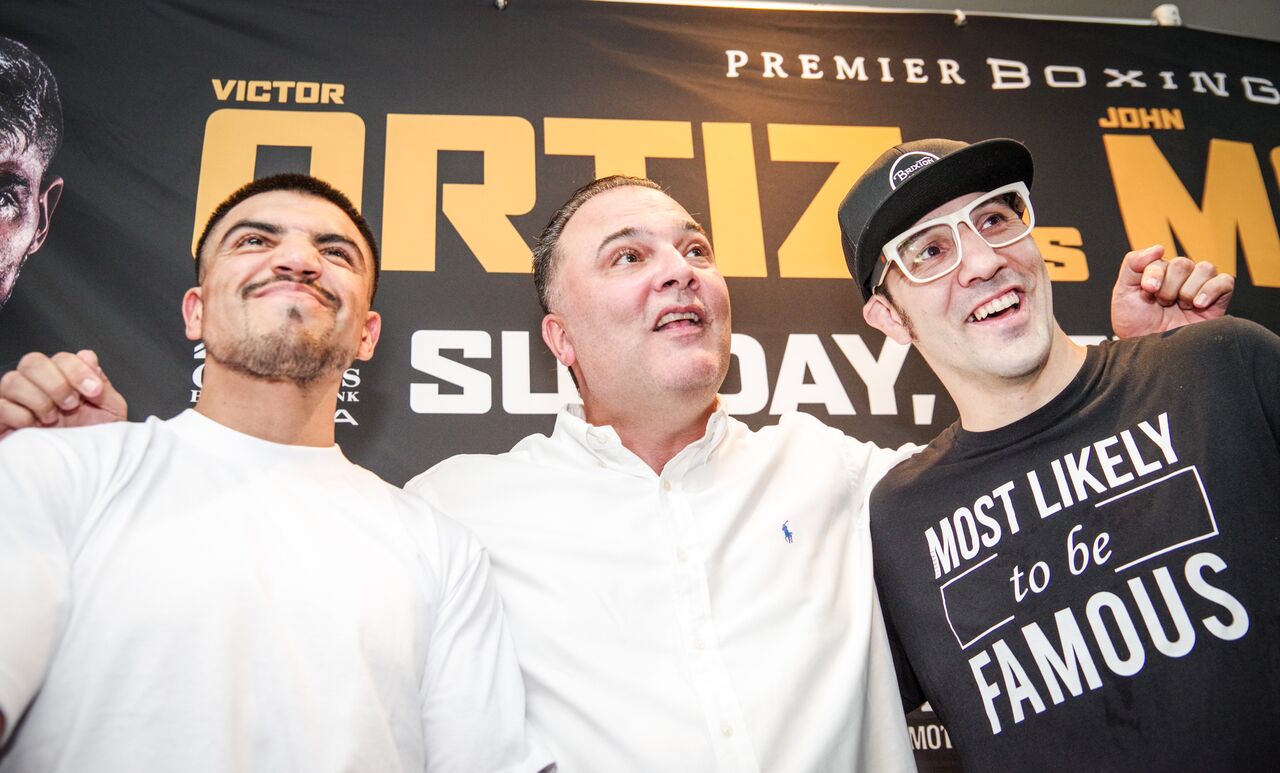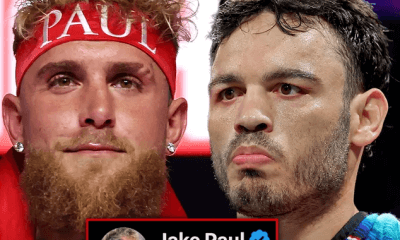Featured Articles
Ortiz-Molina is Off and Wilder-Fury is On

Late Tuesday morning, Sept. 25, I received an e-mail from powerhouse PR firm Swanson Communications regarding Sunday’s TV fight at the Citizens Bank Center in Ontario, California, between Victor Ortiz and John Molina Jr. This was a generic press release informing boxing writers of the date, time, and location of the pre-fight press luncheon and the weigh-in, among other particulars.
Several hours later, Victor Ortiz was the subject of a story by Christian Martinez in the Ventura (CA) Daily Star. The timing was awkward.
Martinez informed his readers that Ortiz had turned himself in to authorities in Oxnard, California, where he was wanted on three counts of sexual assault. The charges related to an incident that happened in March. As reporter Martinez noted, this wasn’t Ortiz’s first brush with the law. He was on probation for a DUI offense. His bail was set at $100,000.
In the Internet Age, news spreads like wildfire, especially if the news is in regard to some scandal. Within hours, Martinez’s story was being rehashed on dozens of web sites.
As of Wednesday morning, Ortiz was free on bail and the fight was still on. All things considered, it shaped up as a doozy, notwithstanding the fact that Ortiz and Molina are friends and both are on the wrong side of the hill. Ortiz, a former WBC world welterweight champion, and Molina, a two-time world title challenger, were seldom in a dull fight. Ortiz’s 2011 rumble with Andre Berto was named the 2011 Fight of the Year by The Ring magazine. He would subsequently appear on “Dancing With the Stars” where his story of growing up in a dysfunctional home – he spent part of his youth in foster care – earned him legions of new fans.
It didn’t seem right that the fight would still happen, not in this day and age, not with the “Me Too” movement having gained so much traction and, predictably, it has now been cancelled. It was John Molina, not co-promoters Al Haymon or Richard Schaefer, or their spokespeople, who broke the news.
“All right guys,” said Molina in a video, “the fight has been officially cancelled obviously due to uncontrollable circumstances from Team Ortiz. Team Molina was ready. To all my friends, family and fans, that were ready to see me get down on Sunday, I’ll be in the house still, but I apologize.” (Odd that he would apologize when it wasn’t his fault.)
The show will go on without the Ortiz-Molina fight, and even without it, it’s an interesting show. The 10-round contest between undefeated Tex-Mex featherweight Brandon Figueroa and Columbia’s Oscar Escandon (25-4), a former world title challenger, shapes up as a very competitive scrap. Two hot heavyweight prospects, Joe Joyce and Efe Ajagba, and promising Philadelphia featherweight Stephen Fulton will be showcased on the undercard.
Joyce (5-0, 5 KOs) represented Great Britain in the 2016 Olympics and emerged with a bronze medal after losing a split decision to eventual champion Tony Yoka in the semifinals. He currently hangs his hat at Abel Sanchez’s compound in Big Bear where he will soon have a new sparring partner, Tyson Fury.
Joyce, who is on the fast track, is pitted against Iago Kiladze (26-3), an LA-based fighter from the Republic of Georgia.
Ajagba (6-0, 5 KOs) also participated in the Rio Olympics. An imposing physical specimen, he was the only boxer from Nigeria to qualify. He won his first pro fight in 25 seconds and his fifth pro fight in 35 seconds. His last bout entered the books as a win by disqualification when his opponent, Curtis Harper, returned to his dressing room at the sound of the opening bell.
Harper said he was making a statement about his purse. Co-promoter Schaefer had a different take on it. In Schaefer’s view, Harper took one look at Ajagba and wet his pants.
The 24-year-old Fulton (13-0, 6 KOs) is paired against Mexican trial horse German Meraz in an 8-round affair. This figures to go a few rounds. Meraz, who turned pro in 2005 at age 18, has been stopped only eight times in 112 bouts.
The Joyce, Ajagba, and Fulton bouts will be on TV along with Figueroa-Escandon. The Sunday night show will air on Fox Sports 1 and Fox Deportes.
WILDER-FURY
Unless someone gets injured in training, the highly-anticipated match between WBC heavyweight title holder Deontay Wilder (40-0, 39 KOs) and former lineal heavyweight champion Tyson Fury (27-0, 19 KOs) will take place on Saturday, Dec. 1, at the Staples Center in Los Angeles. This wasn’t the first choice of Fury’s promoter Frank Warren but the T-Mobile Arena in Las Vegas was unavailable. The bout will air on SHOWTIME PPV.
Next week Wilder and Fury will embark on a whirlwind three day, three city tour. On Monday, Nov. 1, the two will face off in London. Then it’s off to New York and then Los Angeles. All three events will be open to the public.
The star of these sessions will be the colorful, bombastic Fury, the self-styled Gypsy King. In his view, the heavyweight division currently consists of himself and a bunch of bums.
Photo credit: Luis Mejia / Ringstar Sports
Check out more boxing news on video at The Boxing Channel
-

 Featured Articles4 weeks ago
Featured Articles4 weeks agoAvila Perspective, Chap. 330: Matchroom in New York plus the Latest on Canelo-Crawford
-

 Featured Articles3 weeks ago
Featured Articles3 weeks agoVito Mielnicki Jr Whitewashes Kamil Gardzielik Before the Home Folks in Newark
-

 Featured Articles21 hours ago
Featured Articles21 hours agoResults and Recaps from New York Where Taylor Edged Serrano Once Again
-

 Featured Articles4 weeks ago
Featured Articles4 weeks agoCatching Up with Clay Moyle Who Talks About His Massive Collection of Boxing Books
-

 Featured Articles5 days ago
Featured Articles5 days agoFrom a Sympathetic Figure to a Pariah: The Travails of Julio Cesar Chavez Jr
-

 Featured Articles3 weeks ago
Featured Articles3 weeks agoMore Medals for Hawaii’s Patricio Family at the USA Boxing Summer Festival
-

 Featured Articles1 week ago
Featured Articles1 week agoCatterall vs Eubank Ends Prematurely; Catterall Wins a Technical Decision
-

 Featured Articles4 weeks ago
Featured Articles4 weeks agoRichardson Hitchins Batters and Stops George Kambosos at Madison Square Garden




















